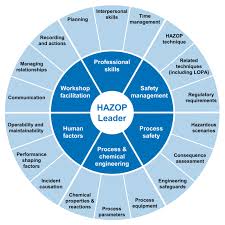About this course
1. Introduction to HAZOP and its objectives
2. HAZOP team composition and roles
3. HAZOP methodology and techniques
4. Identification and analysis of hazards
5. Identification and analysis of operability issues
6. Identification and analysis of system interactions
7. Identification and analysis of human factors
8. Identification and analysis of environmental factors
9. Identification and analysis of external events
10. Identification and analysis of consequences
11. Identification and analysis of safeguards
12. Identification and analysis of failure modes
13. Identification and analysis of recovery options
14. Identification and analysis of emergency scenarios
15. Identification and analysis of safety systems
16. Identification and analysis of security systems
17. Identification and analysis of maintenance requirements
18. Identification and analysis of inspection and testing requirements
19. Identification and analysis of management of change
20. Implementation and review of HAZOP recommendations
who should attend and its benefits
HAZOP (Hazard and Operability) is a risk assessment technique that is typically used in the design, construction, and operation of industrial facilities. It is a systematic method for identifying and evaluating potential hazards, operability issues, and other problems that could affect the safety, health, and environment of a facility.
The following individuals and groups should attend a HAZOP course:
1. Process engineers and designers
2. Safety engineers and managers
3. Operations and maintenance personnel
4. Environmental, health, and safety professionals
5. Quality and reliability engineers
6. Project managers and supervisors
7. Risk assessment and management professionals
8. Auditors and regulatory compliance personnel
Benefits of attending a HAZOP course include:
1. Improved understanding of potential hazards and operability issues in industrial facilities
2. Improved ability to identify and evaluate hazards and operability issues during the design and operation of a facility
3. Improved ability to implement and maintain safety and health programs and systems
4. Improved compliance with safety and environmental regulations
5. Improved ability to anticipate and respond to emergency situations
6. Improved ability to identify, evaluate and implement mitigation measures for identified hazards and operability issues
7. Improved ability to identify and evaluate the impact of changes to the facility on safety, health, and environment
8. Improved ability to effectively communicate and collaborate with other members of the HAZOP team
Comments (0)



.png)




